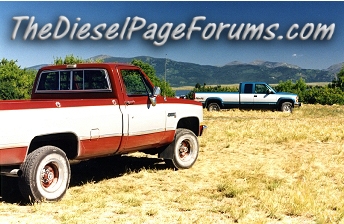I watched a couple of pickup truck related events on Youtube recently. The first photo here was screenshot from the 2023 Hot Rod Powertour video while the tour was in eastern Tennessee and the other was from a video about a Chevy C10 group event that was sponsored by LMC Trucks. I saw a couple of trucks while watching the videos that made me hit the rewind button....
Though Lil Red is now 35 years old (but 20 years in its present form), it seems some of the design elements may have appealed to a couple of other truck builders. I think its cool.
Jim









 Reply With Quote
Reply With Quote








